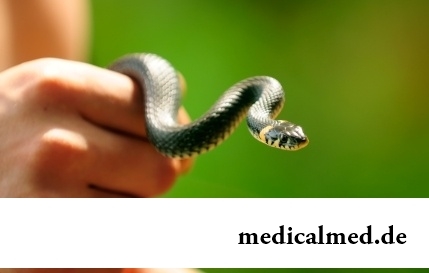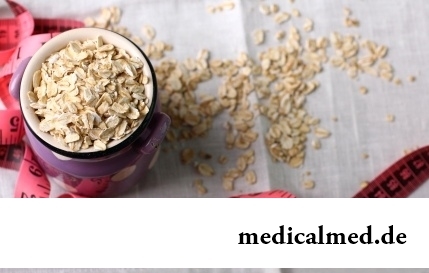





Leukeranum
Application instruction:
 Leukeranum – antineoplastic drug; the bifunctional alkylating connection.
Leukeranum – antineoplastic drug; the bifunctional alkylating connection.
Form of release and structure
Dosage form of Leukeranum – a tablet, coated: biconvex, round, brown color, on one of the parties an engraving of "L", on another – "GX EG3" (on 25 pieces in bottles of dark glass, 1 bottle in a cardboard pack).
Contain in 1 tablet:
- Active agent: hlorambutsit – 2 mg;
- Auxiliary components: acid stearin, microcrystallic cellulose, lactose anhydrous, silicon colloid anhydrous;
- Cover: Opadry brown YS-1-16655A (titanium dioxide, gipromelloz, macrogoal, ferrous oxide red and yellow).
Indications to use
- Hodzhkin's lymphoma (malignant granuloma, lymphogranulomatosis);
- Malignant lymphoma (lymphosarcoma inclusive);
- Valdenstrem's macroglobulinemia;
- Chronic lymphoid leukosis.
Contraindications
Absolute:
- Pregnancy period;
- Lactation (breastfeeding);
- Hypersensitivity to any of components.
Relative (drug is used with care owing to the increased probability of side effects, after comprehensive assessment of a ratio risk/advantage):
- Oppression of a marrowy hemopoiesis (the expressed anemia, thrombocytopenia and leukopenia);
- Chicken pox (the current disease or postponed recently);
- Shingles;
- Acute infectious pathologies of a bacterial, virus and fungal etiology;
- Infiltration by tumor cells of marrow;
- Urolithiasis;
- Diseases of kidneys and liver of heavy degree;
- Data in the anamnesis on gout, injuries of the head, epilepsy.
Route of administration and dosage
Pill is taken inside, swallowing of whole, it is not necessary to chew or divide them into parts.
Preferential drug is used as a part of complex therapy therefore for a right choice of the mode of dosing it is necessary to study special literature and summaries to the medicines used in a combination with Leukeranum.
The recommended dosing mode depending on a state/disease:
- Hodzhkin's (monotherapy) lymphoma: 0,2 mg/kg of body weight a day for 4-8 weeks;
- Nekhodzhkinsky lymphoma (monotherapy): an initial dose – 0,1-0,2 mg/kg of body weight a day for 4-8 weeks; further carry out the supporting treatment by discontinuous courses or in a smaller daily dosage;
- Chronic lymphoid leukosis: an initial dose – 0,15 mg/kg of body weight a day before decrease in total number of leukocytes of blood to 10 000/mkl; 4 weeks later upon termination of the first course it is allowed to resume treatment in a maintenance dose – 0,1 mg/kg of body weight a day;
- Valdenstrem's macroglobulinemia (as choice drug): an initial dose – 6-12 mg a day daily; after development of a leukopenia it is necessary to pass to a maintenance dose – 2-8 mg a day daily throughout the uncertain period.
At children Leukeranum is applied to treatment of nekhodzhkinsky lymphoma and Hodzhkin's disease with use of the same schemes, as to adult patients.
In case of lymphocytic infiltration or a hypoplasia of marrow the daily dose of drug should not exceed 0,1 mg/kg of body weight.
Side effects
- System of a hemopoiesis: very often – thrombocytopenia, a leukopenia (reversible at the timely termination of administration of drug), a lymphopenia, decrease in a hemoglobin content, a neutropenia; extremely seldom – oppression of function of marrow (irreversible);
- Digestive tract: often – ulcerations of a mucous oral cavity, nausea, vomiting, diarrhea; seldom – a toksiko-allergic hepatotoxic action (cirrhosis or гепатонекроз, jaundice, a cholestasia);
- Respiratory system: extremely seldom – intersticial pneumonia, and in case of long administration of drug can develop an intersticial pneumosclerosis;
- Allergic answers: sometimes – rash on skin; seldom – a Quincke's disease, urtikaropodobny rash; extremely seldom – Stephens-Johnson's syndrome (a malignant exudative erythema), a Lyell's disease (a toxic or acute epidermal necrolysis);
- Nervous system: often – spasms at a nephrotic syndrome at children; seldom – generalized and/or local spasms at the adults and children receiving hlorambutsit daily in therapeutic doses, or at high-dose pulse therapy; extremely seldom – a tremor, uncertainty when walking, muscular twitchings, paresis, a peripheral neuropathy, excitement, the expressed weakness, confusion of consciousness, uneasiness, hallucinations;
- Urinary system: extremely seldom – aseptic cystitis;
- Another: a hyperuricemia, a medicinal hyperthermia or a nephropathy owing to the increased formation of uric acid (as result of bystry disintegration of cells), a secondary amenorrhea, disturbance of a menstrual cycle, a secondary malignancy, an azoospermism.
Symptoms of overdose are the ataxy, a hyperexcitability, a reversible pancytopenia, repeated epileptoidny attacks like grandee маль (grand mal). There is no specific antidote.
For the purpose of therapy it is necessary to wash out immediately a stomach, to watch work and to support the vital functions of an organism, to carefully control blood tests and to hold the general supporting events, including hemotransfusion or its components (according to indications). Carrying out dialysis is not effective.
Special instructions
Leukeranum – cytotoxic means which is recommended to be applied only under control of the specialist having experience of use of similar drugs.
Taking the pill Leukeranum it is necessary to implement all recommendations about use of cytotoxic drugs. When the outside cover of tablets is not damaged, their contact with skin is harmless therefore it is forbidden to split up tablets.
As hlorambutsit it is capable it is irreversible to oppress functions of marrow, during therapy follows systematically (at least 2-3 weekly) to do the general blood test with calculation of uniform elements of peripheral blood.
In therapeutic doses drug oppresses development of lymphocytes and to a lesser extent exerts impact on hemoglobin level, and also on quantity of thrombocytes and neutrophils.
The first signs of decrease in quantity of neutrophils are not an indicator for the termination of reception of Leukeranum, but it is necessary to remember that the quantity of neutrophils can decrease for 10 days and more after reception of the last dose of drug.
After end of a course of radiation therapy or treatment by the cytostatic drugs Leukeranum it is admissible to accept not earlier than 11/2-2 months later provided that there are no signs of the expressed leukopenia, anemia and thrombocytopenia.
Because of the increased risk of development of spasms throughout all course of treatment under careful medical control there have to be following groups of patients: receiving high-dose pulse therapy Leukeranum, children with a nephritic syndrome and patients with convulsive attacks in the anamnesis.
Careful monitoring is required to patients with disturbances of secretory function of kidneys as owing to an azotemia at them more expressed miyelosupressiya can develop.
In case of increase in blood serum of concentration of uric acid it is necessary to apply the means alkalinizing urine. Development of a nephropathy can be prevented consumption of liquid in required quantities and/or purpose of Allopyrinolum as necessary.
At heavy abnormal liver functions patients are recommended to appoint Leukeranum in smaller doses.
As use of the alkylating means is accompanied by essential increase in risk of development of an acute leukosis, it is necessary to compare potential therapeutic effect of this drug with probability of developing of an acute leukosis owing to reception of a hlorambutsil.
Patients of reproductive age for protection at sexual contacts need to use reliable ways of contraception.
Medicinal interaction
- The medicines oppressing a hemopoiesis: can strengthen a miyelotoksichnost;
- Antigouty drugs: it is necessary to adjust doses as hlorambutsit can increase concentration in blood of uric acid;
- Tricyclic antidepressants, monoamine oxidase inhibitors, Maprotilinum, haloperidol, thioxanthenes, fenotiazina: can lower a threshold of convulsive activity owing to what the probability of convulsive attacks increases;
- The substances which are intensively contacting proteins of plasma: as a result of the competition at the level of communication with protein strengthen toxic action of a hlorambutsil;
- The inactivated virus vaccines: development of antibodies in response to vaccination decreases;
- Live virus vaccines: process of replication of a vaccinal virus is intensified, its side/adverse effects amplify and/or development of antibodies decreases.
Terms and storage conditions
To store in the place unavailable to children, at a temperature from 2 to 8 °C.
Period of validity – 3 years.
Caries is the most widespread infectious disease in the world to which even flu cannot compete.

For many spouses the question of planning of a family is one of the main. The choice problem effect at the same time comes out on top...
Section: Articles about health
In consciousness of our many compatriots idea that folk remedies if are no more effective, than medicinal "chemistry" strongly took roots, then are precisely less harmful. Unfortunately, it is not always fair: some receptions treating...
Section: Articles about health
Health and attractiveness - eternal values, pursuing which people often use the most unusual ingredients and technicians. Let's consider 11 most exotic and sometimes not most pleasant Spa procedures to which the person in a pursuit of beauty and youth agrees....
Section: Articles about health
Traveling all over the world, many try to try the most exotic dishes of national cuisines. Exists even so-called died away...
Section: Articles about health
The summer of this year in Russia was very ambiguous. Regions suffered from a merciless heat, from pouring rains, the hail from time to time dropped out, then there was again a heat which alternated with rainfall again. Many people suffer from such sharp changes of weather...
Section: Articles about health
Such trouble as the milkwoman's attack, at least once in life happened almost to each woman. Prevalence of a disease is explained by the fact that the causative agent of an illness belongs to the so-called opportunistic microflora living on mucous membranes of any human body and which is becoming more active only under favorable conditions. If you had curdled allocations from a vagina, the itch and burning in external genitals, or painful feelings disturb at sex...
Section: Articles about health
Epilepsy is one of widespread neurologic diseases. To parents, whose children suffer from this illness, it is necessary...
Section: Articles about health
More than a half of the married couples which faced prostatitis – leave. The new broadcast "Female View of Prostatitis" will help to learn – whether you have or your relatives problems....
Section: Articles about health
At this plant there are a lot of names: tuberiferous sunflower, Jerusalem artichoke, solar root, earth pear. Contrary to popular belief, it is not an exotic plant at all. The wild girasol grows in a midland of Russia practically everywhere: at the edges of roads, to slopes of ravines, on heathlands. Also several cultural versions different from wild plants are removed by larger and juicy root crops....
Section: Articles about health
Run - one of the most available and effective ways to revitalize the organism. Knowing about its extraordinary advantage, each of us though...
Section: Articles about health
Tick-borne encephalitis – one of the most dangerous viral diseases which causative agents transfer and is given to people by ixodic mites. These are the small blood-sicking insects living in the considerable territory of our country. The person bitten by a tick can catch...
Section: Articles about health
The words "disease" and "patient" not without reason come from one root – "pain". As a rule, symptoms of illnesses thoroughly spoil to patients life. However from this rule there are exceptions. Some diseases are shown by signs which can cause even positive emotions. It is a pity only that the majority of such illnesses are heavy and incurable....
Section: Articles about health
Eyes – unique body on the structure thanks to which the person obtains about 80% of information on the world around: about a form...
Section: Articles about health
The varicosity has familiarly many, statistically, this disease more than a half of all adult population. As a rule, the varicosis affects preferential superficial vessels, and is shown by characteristic cosmetic defects. Guo...
Section: Articles about health
The phenomenon of the panic attack is known long ago, but the reasons of its emergence still are up to the end not found out. It is established that more than 30% of people at least once in life become the victims of very unpleasant phenomenon: without everyones on that the reasons they have a feeling of horror which is followed by a cardiopalmus, a shiver and the fever or feeling of sudden heat increased by sweating, breath constraint, dizziness, nausea....
Section: Articles about health
Modern footwear is extremely various. It stopped being only protection for legs long ago. Today shoes, boots, barefoot persons in...
Section: Articles about health
Life activity of one-celled fungi of the sort Candida, related to yeast is a proximate cause of development of candidiasis (milkwoman). Normal these microorganisms are a part of the microflora living in an oral cavity and intestines of most of people, and that...
Section: Articles about health
Memory is an ability of the central nervous system to fix, keep and as necessary to reproduce information on knowledge or skills received by the person or an animal during life. The mechanism of this process is up to the end not studied....
Section: Articles about health
The brain of the person is studied not one hundred years, but the quantity of the riddles connected with this body increases rather, than reducing...
Section: Articles about health
Heart disease and blood vessels lead to disturbance of blood supply of bodies and fabrics that involves failures in their work, deterioration in health of the person, decrease in its working capacity and standard of living. Annually such perishes from pathologies more...
Section: Articles about health
The modern person not always manages to find housing in the environmentally friendly region and such work which would not do harm to health. With food stuffs at first sight the situation is much better: shops are overflowed with goods which are positioned by producers as very useful and absolutely safe. Many Russians are absolutely sure that the choice of products with marking "bio", "эко" or "organik" guarantees them and members of their families an optimal variant of food. To a sozhala...
Section: Articles about health
The phenomenon of improvement of a condition of the patients at administration of drugs who are not containing active agents, so-called effect of placebo is known...
Section: Articles about health
Each person knows that fervescence is an illness sign. However too low temperature (hypothermia), especially also can demonstrate existence of diseases when it is observed long enough. Such state is dangerous those...
Section: Articles about health
The list of stereotypes of which, apparently, all know strongly includes following: British surely eat porridge for breakfast. Perhaps, not all modern residents of Britain arrive quite so, but for those from them which continue to follow this tradition, it is possible to be glad sincerely: oat flakes are a product which regular use not only helps the person to keep force and beauty long. Porridge in a special way influences an organism, protecting it from seriousness...
Section: Articles about health
Tea is loved and use almost everything. This drink has tonic properties, contains the tannins capable podavlit...
Section: Articles about health
Feeding by a breast - the integral part of ideal motherhood allowing to come into contact with the kid and to create to it healthy immunity since early years. Nevertheless, this important process in life of mother and child can be saddened laktostazy − by a delay of milts...
Section: Articles about health
The unpleasant feelings connected with spring breakdown are familiar almost to each of us. Often happens that in March-April on the person weakness leans: he suffers from drowsiness, complains of bad mood, loss of interest in life and failures in affairs....
Section: Articles about health
